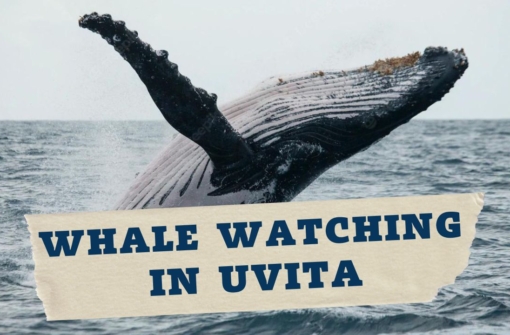Whale watching in Costa Rica is an extraordinary attraction that offers an unforgettable experience, etched in your memory for years to come. Picture yourself amidst the grandeur of humpback whales, gracefully navigating their natural habitat. These magnificent creatures are drawn to the warm waters of Costa Rica during their annual migration, providing us with a unique opportunity to observe their behaviors and marvel at their presence.
While whale watching in Costa Rica is truly remarkable, it’s important to note that the season for this activity is limited to a few weeks. To ensure you’re in the right place at the right time, we have compiled valuable information on where and when to spot humpback whales. Equipped with this knowledge, you’ll be able to maximize your chances of encountering these awe-inspiring creatures. Don’t forget to bring your camera along, as you never know what captivating moments await you on the ocean.
Table of Contents
As an experienced company specializing in scuba diving trips and whale watching in Costa Rica, our aim is not to promote our services, but rather to provide you with a comprehensive guide, eliminating the need for further research. Our ultimate goal is to ensure your utmost satisfaction during your stay in the enchanting country of Pura Vida.
Within this essay, we will endeavor to cover all aspects of whale watching tours, including pricing and the best locations. Additionally, we will provide information on the optimal season for this captivating activity in Costa Rica. Our intention is to furnish you with an all-encompassing and definitive guide, leaving no question unanswered after reading. So, without further ado, let us embark on this informative journey. Shall we begin?

Costa Rica, renowned for its abundant natural resources, lush jungles, and diverse wildlife, offers a remarkable opportunity to witness the awe-inspiring humpback whales during their annual migration. This captivating phenomenon grants us the privilege of observing these majestic creatures, both adults and their offspring. What’s even more remarkable is that you don’t have to venture far into the open sea to witness this spectacle; in some instances, whale watching can be enjoyed even from the beach.
But why do these magnificent creatures choose Costa Rica as their destination? The humpback whales embark on their annual journey when the waters in the northern and southern regions become too cold, prompting their migration. These colossal beings make their way to the warm waters of Costa Rica from two directions: the northern Alaskan region and the southern Antarctic region.
The primary and most significant reason for their migration is the birth of their young. In the welcoming waters of Costa Rica, female humpback whales give birth to their calves, providing a safer environment for their offspring. The warm water aids in their rapid weight gain and fosters their independence. Additionally, the area boasts fewer predators that pose a threat to the vulnerable young whales. It is these favorable conditions that allow us to witness this awe-inspiring spectacle year after year.
Witnessing these immense creatures firsthand is an experience that will undoubtedly leave an indelible mark on your memory. Picture the awe-inspiring sight of a creature the size of a school bus gracefully emerging from the depths right beside your boat. It is this extraordinary encounter that has rightfully made whale watching in Costa Rica immensely popular. However, before embarking on a whale watching excursion, it is valuable to acquaint yourself with a few key facts about these majestic beings.
Let’s begin with the remarkable size of these creatures, and the humpback whale has much to boast about in this regard. It ranks among the largest animals on our planet, reaching lengths of over 16 meters (50 feet) and weighing a staggering 40 tons. What’s intriguing and worth noting is that such immense proportions are made possible by the whale’s marine lifestyle. It is the principles of physics and the buoyancy provided by seawater that enable these extraordinary dimensions. If an animal of this size were to inhabit land, it would undoubtedly be crushed under the weight of its own body.

As you are aware, these magnificent creatures rank among the largest in the world. Yet, navigating their massive bodies demands a significant amount of energy. Humpback whales, despite their imposing size, are not particularly selective when it comes to their diet. They consume a wide array of nourishment that is available to them. Whether it’s shrimp, plankton, small fish, squid, or sea snails, they will devour whatever is deemed suitable. What truly astounds is the sheer quantity of food that an adult humpback whale must consume each day to sustain itself. And we’re not talking about a dainty meal, but a staggering 2 tons of sustenance!
When we take into consideration the size of the shrimp or other creatures that whales feed on, it becomes apparent that a substantial amount is required to satiate such a massive animal. To enhance their food acquisition process, whales have developed a fascinating hunting technique known as Bubble Net Feeding. This involves creating a barrier of exhaled air bubbles to disorient a school of fish, enabling multiple whales to capture food simultaneously. Interestingly, this behavior is not innate but learned, and not all groups of whales possess this skill. Furthermore, some groups have their own variations of this method, showcasing the diversity and adaptability within the humpback whale population.
The humpback whale, with its immense size and insatiable appetite, faces the challenge of constantly meeting its dietary needs. However, despite this demanding task, humpback whales have an average lifespan of around 45 to 50 years. While this may seem impressive, it pales in comparison to the remarkable longevity of the bowhead whale, which can live up to an astounding 200 years! The bowhead whale’s exceptional lifespan is one of the reasons it holds the title for the longest-living mammal on Earth.
Just like any other animal, whales also need to sleep, although their sleep patterns differ from those of humans. Different whale species have developed their own unique methods of resting. For instance, some whales may rest quietly in the water, either in a horizontal or vertical position, while others might sleep while slowly swimming alongside another member of their pod.
Humpback whales, in particular, can often be observed resting by remaining motionless on the ocean’s surface. During this time, they may appear to be in a state of sleep. However, humpback whales cannot sleep for more than approximately 30 minutes at a time without risking a drop in body temperature due to reduced activity. Therefore, their resting periods are relatively brief.
Encountering a sleeping whale can be a remarkable experience while whale watching in Costa Rica. It offers a glimpse into the fascinating world of these magnificent creatures during their moments of rest and rejuvenation.
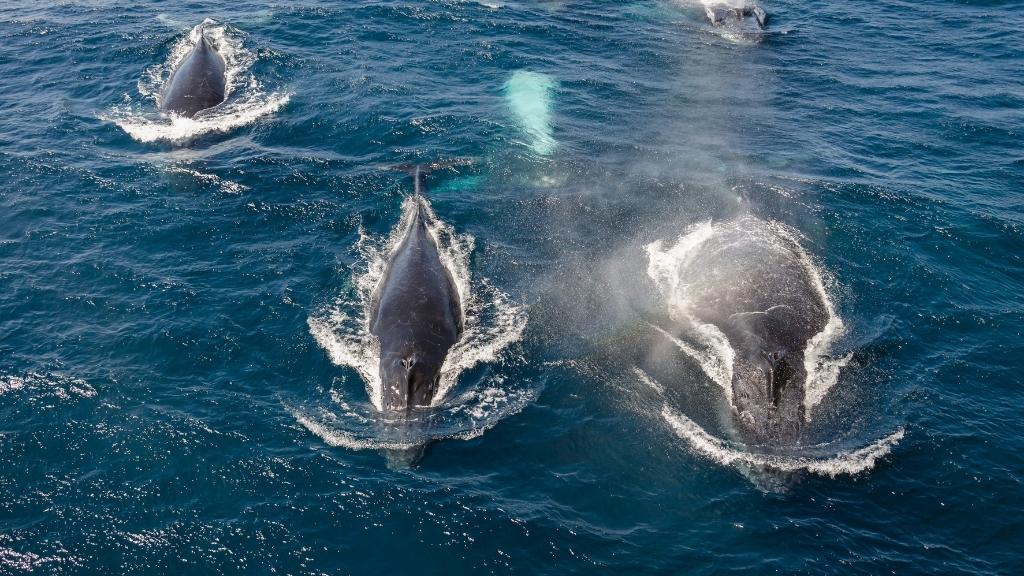
Whales are known for their highly social nature, living and traveling in groups called pods. They rely on various sounds to communicate with one another, using a combination of clicks, whistles, and pulsating calls. Clicks serve multiple purposes, including navigation and echolocation. By emitting clicks and listening to the echoes as they bounce off objects, whales can discern the shape and location of their surroundings.
Whistles and pulsating calls are employed during social interactions and are often characterized by sounds resembling squeaks, screams, or even musical tones. These vocalizations, known as whale songs, are unique to each individual and can carry important information for the pod, such as identifying themselves, maintaining contact, or expressing emotions.
Whale vocalizations are complex and diverse, reflecting the rich and intricate communication system that exists within their social groups. Scientists continue to study and decipher these incredible sounds to gain a deeper understanding of whale behavior and their fascinating underwater world.
Humpback whales are viviparous, which means they give birth to live young instead of laying eggs. Similar to humans, their offspring are born after a gestation period, and this significant event occurs during their migration to warmer waters. As mentioned before, the warm waters of Costa Rica provide optimal conditions for the development and safety of their offspring. This is a primary driving force behind their annual migrations and makes whale watching in Costa Rica a remarkable opportunity to witness the birth and nurturing of these majestic creatures in their natural habitat.
Humpback whales, despite their size and resilience, face predation from several species that specialize in hunting them. Among these top predators are orcas, also known as killer whales. False killer whales and large sharks are also known to hunt humpback whales. When orcas are present in Costa Rican waters, it poses a direct threat to the young whales. This natural predator-prey relationship, while a part of the ecosystem, may evoke personal concerns and emotions regarding the well-being of these magnificent creatures.
The humpback whales that can be observed in Costa Rica migrate to the area from two different directions, driven by similar reasons. Firstly, they come here for the birth of their offspring, seeking the warmer waters that provide better conditions for their development. Additionally, both groups of whales embark on their journey due to the decreasing temperatures in the north and south regions. The first group travels from the vicinity of Alaska, traversing the entire west coast of the Americas. The second group arrives from the south, originating near Patagonia. These lengthy and arduous journeys make the warm waters of Costa Rica a well-deserved resting place for these magnificent creatures.
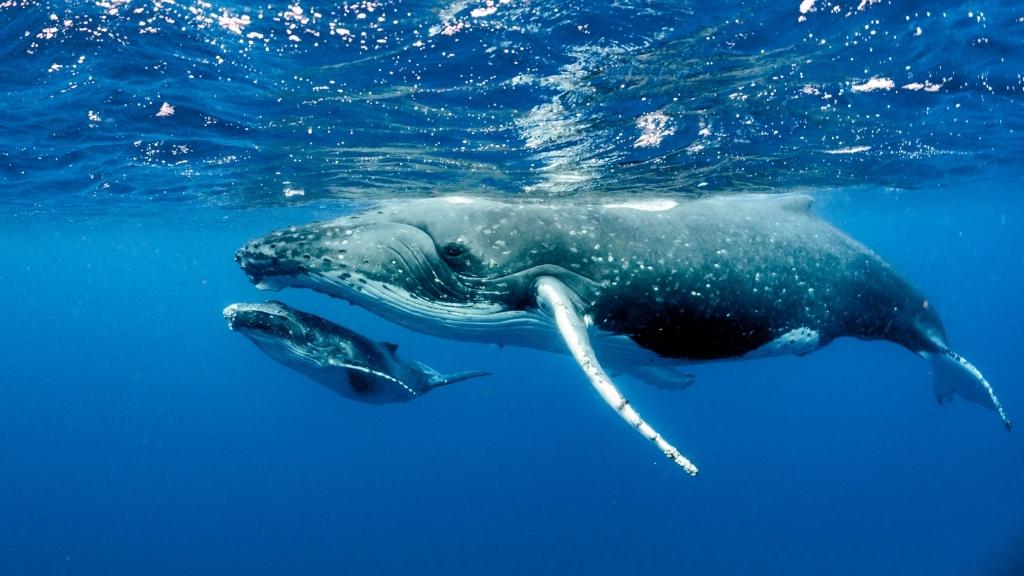
Whale watching in Costa Rica offers a remarkable experience to witness majestic humpback whales in their natural environment. Costa Rica is renowned as one of the prime destinations to observe these magnificent creatures, particularly during their birthing season. But where can you find the best spots for whale watching in Costa Rica?
Undoubtedly, the town of Uvita on the Pacific coast stands out as the premier destination for whale watching in Costa Rica. Located approximately 3-4 hours away from the capital, San Jose, Uvita serves as the departure point for whale watching tours and offers the highest likelihood of encountering whales in their natural habitat. The surrounding waters of Uvita are encompassed within the protected area of Marino Ballena National Park. But what makes this place the ultimate choice for whale watching enthusiasts?
Firstly, Marino Ballena National Park is renowned for its commitment to marine conservation and protection. The park’s dedication to preserving the natural environment provides a sanctuary for marine life, including the majestic humpback whales. This commitment ensures a sustainable and responsible approach to whale watching activities.
Secondly, Uvita’s geographical location plays a crucial role. The Pacific waters near Uvita serve as a vital migratory route for humpback whales, as they journey to these warm and sheltered breeding grounds. The combination of ideal water temperature, abundant food sources, and suitable conditions makes Uvita an irresistible destination for these magnificent creatures.
Furthermore, the unique underwater topography around Uvita, characterized by underwater ridges and canyons, creates an optimal feeding environment for marine life. These features attract large numbers of small fish, crustaceans, and other prey species, which, in turn, draw humpback whales seeking sustenance during their migration.
The local tour operators and guides in Uvita possess extensive knowledge and experience in whale behavior and migration patterns. They are dedicated to providing informative and unforgettable whale watching excursions, ensuring visitors have the best possible opportunity to witness these gentle giants up close.
In summary, Uvita, with its strategic location, protected marine park, and knowledgeable guides, offers the perfect combination of factors for an exceptional whale watching experience in Costa Rica. By choosing Uvita as your base, you increase your chances of witnessing the awe-inspiring beauty of humpback whales in their natural habitat, creating memories that will last a lifetime.
Tamarindo, situated in the province of Guanacaste, is another coastal town in Costa Rica where you can potentially witness the presence of whales swimming along the coast. While dedicated whale watching tours may not be as common in this area, there is still a chance to encounter these magnificent creatures while engaging in activities like snorkeling or scuba diving.
The waters off the coast of Tamarindo offer a diverse marine ecosystem, attracting various species of marine life, including humpback whales during their migratory period. While the sightings may be more sporadic compared to dedicated whale watching destinations, the opportunity to observe whales in their natural habitat adds an extra element of excitement to your underwater adventures.
If you plan to explore the underwater world around Tamarindo through snorkeling or scuba diving, keep a keen eye out for any signs of whale activity. Although encounters may be unpredictable, the possibility of coming face-to-face with these majestic creatures amidst the vibrant marine life of the region is undoubtedly a remarkable experience.
While Tamarindo may not offer the same level of guaranteed whale sightings as Uvita, it still presents a unique opportunity to witness these awe-inspiring animals while engaging in other water activities. Remember to approach these encounters with respect, maintaining a safe distance to ensure both your safety and the well-being of the whales.
In conclusion, while Tamarindo may not be as renowned for dedicated whale watching tours, the coastal waters in this area present a chance to encounter whales while snorkeling or scuba diving. Exploring the underwater beauty of Tamarindo’s marine ecosystem may lead to unexpected and unforgettable encounters with these incredible marine mammals.
Nicoya Bay, located in Costa Rica, is another excellent destination for whale watching. One of the popular options is to embark on a trip to Tortuga Island during the whale season, as there is a good chance of encountering whales along the way.
As you journey towards Tortuga Island, keep a lookout for the presence of whales in the surrounding waters of Nicoya Bay. The bay provides a favorable habitat for these magnificent creatures, offering ample food sources and a suitable environment for their migratory journeys. While there are no guarantees of sightings, the opportunity to witness whales in their natural habitat adds excitement and wonder to your coastal excursion.
Tortuga Island itself is a stunning destination known for its pristine beaches and crystal-clear waters, making it an ideal setting to combine relaxation with the possibility of spotting marine wildlife. Keep your eyes peeled for any signs of whale activity, such as water spouts or splashing, as these can indicate their presence in the vicinity.
While the primary focus of a trip to Tortuga Island may not be solely dedicated to whale watching, the journey itself presents an opportunity to enjoy the beauty of the coastal surroundings while keeping a lookout for these majestic creatures. Remember to respect the natural environment and maintain a safe distance to ensure the well-being of the whales and the preservation of their habitat.
In summary, Nicoya Bay, including the route to Tortuga Island, offers another promising location for whale watching in Costa Rica. While the sightings may vary, the chance to witness these awe-inspiring animals in their natural habitat enhances the overall coastal experience, providing an unforgettable connection with the rich marine life of the region.
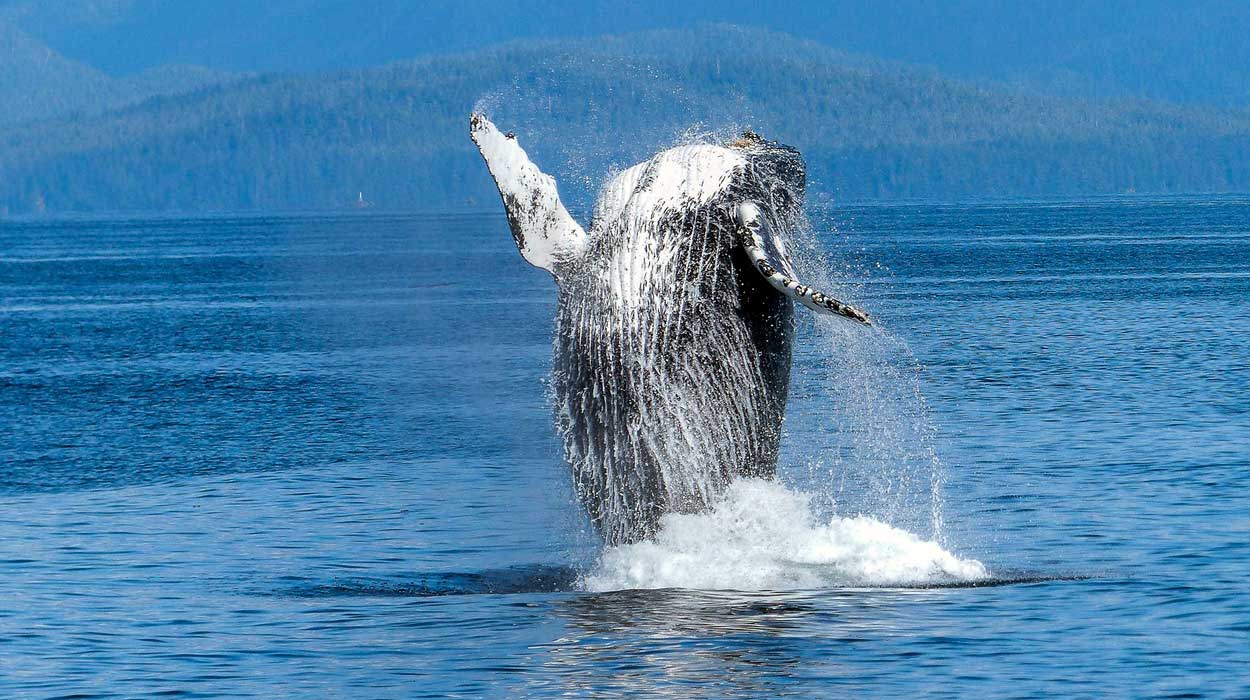
The whale watching season in Costa Rica can be divided into two distinct periods. From July to the end of November, visitors have the opportunity to witness the presence of whales arriving from the north, specifically from the region around Alaska. On the other hand, from mid-December to mid-April, Costa Rica becomes a destination for whales migrating from the south. Both seasons offer unique and exciting whale watching experiences.
During the first season, when the whales from the north are present, it is important to note that this coincides with the rainy season in Costa Rica. While rainfall can be expected during this time, it should not deter you from enjoying the whale watching activities. Remember, you are in the tropics, where occasional rain showers are a part of the natural climate. Despite the rain, the temperatures remain warm, adding to the overall tropical experience.
As the season transitions to the second period, which welcomes whales from the south, the weather in Costa Rica becomes drier and more stable. This period, from mid-December to mid-April, offers pleasant and sunny conditions, creating an ideal setting for whale watching excursions. You can enjoy the breathtaking coastal scenery and observe the majestic whales in their natural habitat under clear skies.
Whether you choose to visit during the rainy season or the dry season, both periods offer excellent opportunities for whale watching in Costa Rica. The chance to witness these magnificent creatures in their migratory journey is a truly remarkable experience. Embrace the tropical climate, come prepared with appropriate rain gear if visiting during the rainy season, and cherish the awe-inspiring moments as you connect with the wonders of nature. Remember to check with local tour operators or consult reliable sources for the most up-to-date information on whale sightings and tour availability during your preferred time of visit.
As mentioned earlier, while it is possible to catch a glimpse of whales from the beach in Marino Ballena National Park, embarking on an organized whale watching tour will provide a much more immersive and educational experience. These tours are designed to ensure that you are in the right place at the right time to witness the presence of these magnificent creatures up close.
During a whale watching tour, the captain receives information from other boats about the current whereabouts of the whales, maximizing your chances of encountering them during their migration. This organized approach guarantees that you can fully appreciate the proximity and beauty of these animals while also learning about their behavior and characteristics. The experience is truly invaluable and well worth the investment.
When searching for whale watching tours in Uvita, you will find numerous operators who offer these services. Our dive center also provides whale watching tours, and we would be delighted to assist you directly.
It is important to note that our whale watching tours in Marino Ballena typically last a couple of hours. During this time, you will have the opportunity to don a mask and snorkel, allowing you to swim in the water and observe the marine environment. Additionally, some tours may include visits to interesting sites such as the caves on Ventanas Beach or the Three Sisters, which are striking rock formations in the ocean.
By participating in a guided tour, you can make the most of your whale watching experience, ensuring that you witness these majestic creatures in their natural habitat while also exploring the fascinating coastal features of the region.
Absolutely not, swimming with whales in Costa Rica is not allowed, and for good reasons. It is essential to prioritize the well-being and safety of both the whales and the visitors. These are wild animals, and their behavior is unpredictable. Getting too close to them can pose significant risks to both parties involved.
Whales are incredibly large and powerful creatures, and swimming in close proximity to them can be dangerous. It is crucial to maintain a respectful distance to avoid any potential harm. Additionally, the stress caused by human presence can have adverse effects on the health and behavior of the whales. We must strive to protect and preserve their natural habitat while observing them responsibly.
It is important to note that swimming with whales in Costa Rica is prohibited by law. This regulation is in place to ensure the conservation and welfare of these magnificent creatures. Therefore, it is strongly advised not to inquire about or attempt to swim with whales during your whale watching tours.
Instead, embrace the opportunity to observe and appreciate these incredible animals from a safe distance. Admire their beauty, witness their natural behaviors, and cherish the privilege of sharing their environment. By doing so, you contribute to the conservation efforts and help maintain the harmony between humans and whales in their natural habitat.
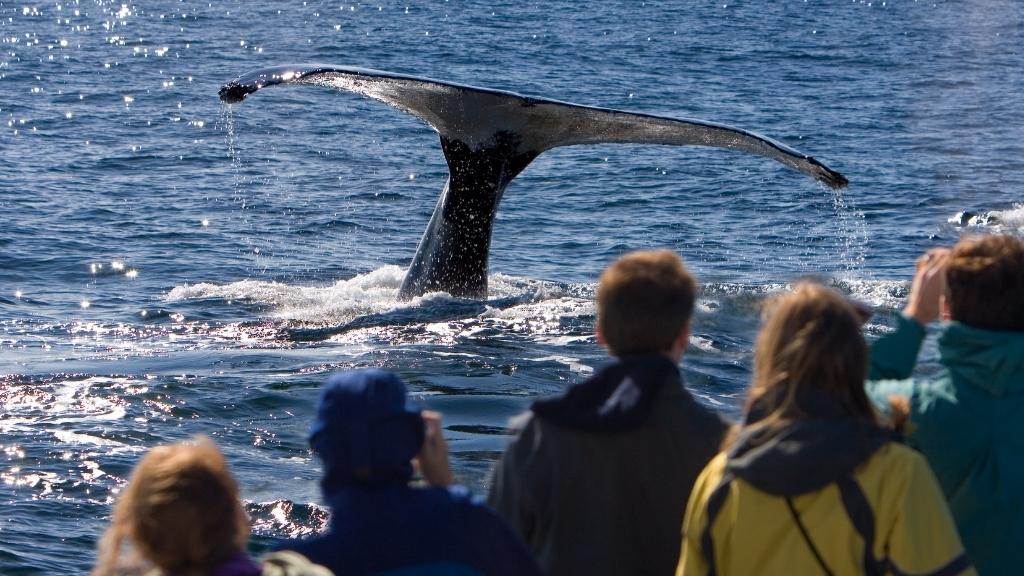
Indeed, whale watching is a remarkable experience that never fails to captivate us. Witnessing these majestic creatures, the size of a school bus, gracefully breaching out of the water is truly awe-inspiring. It serves as a testament to the incredible beauty of nature and the diverse wildlife that inhabits our planet. Engaging in whale watching in Costa Rica not only allows us to appreciate these magnificent animals but also showcases the stunning landscapes and rich biodiversity of the country.
As responsible stewards of the environment, it is crucial to prioritize the protection of these precious creatures and their habitats. By experiencing the wonder of whale watching, we develop a deeper connection to nature and a greater appreciation for conservation efforts. Let us cherish these moments and strive to preserve the delicate balance between human activities and the well-being of these incredible species.
I hope that this comprehensive guide has provided you with valuable insights and essential information to enhance your whale watching experience in Costa Rica. May you include this awe-inspiring adventure in your itinerary, creating lasting memories while fostering a commitment to the conservation of our natural world.

My life has always been linked to sports commonly considered extreme. I once fell in love with big wall climbing, just as I am now in love with scuba diving. I climbed mountains, explored caves and took part in exploration expeditions. Through these experiences, I saw a large chunk of the world and learned a lot. Now I have been a professional diver and a scuba instructor for many years, and Costa Rica has become my second home. Check also my expedition project: @goexplorewith.me

Gift Voucher for a Great Adventure
Give your loved ones a unique gift for any occasion. Our gift voucher is not only for divers, but for anyone who dreams of experiencing an amazing adventure in Costa Rica.

